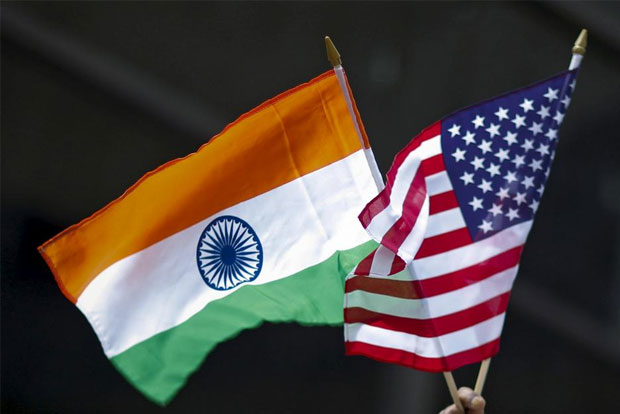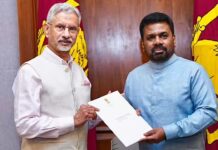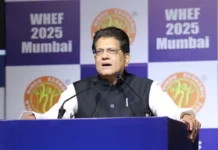WASHINGTON: The US and India are reportedly discussing a deal to allow the Trump administration to reinstate the Generalised System of Preference for India in exchange for certain market access commitments to America, a US Congressional report has informed the lawmakers.
The Generalised System of Preference (GSP) is the largest and oldest US trade preference programme and is designed to promote economic development by allowing duty-free entry for thousands of products from designated beneficiary countries. “The US and India are holding negotiations to address bilateral trade frictions. They reportedly are discussing a deal for the US reinstatement of GSP for India in exchange for certain market access commitments from India,” the Congressional Research Service (CRS) said in its report on India-US trade relations.
In June, the US terminated India’s designation as a beneficiary developing nation under the key GSP trade programme after determining that New Delhi has not assured the US that it will provide “equitable and reasonable access” to its markets. In its report, the bipartisan and independent research wing of the US Congress, the CRS, said that expectations did not materialise for a deal announcement in September 2019 during Prime Minister Narendra Modi’s visit to the US for the United Nations General Assembly.
“Earlier lack of progress reportedly prompted the Administration to consider launching a Section 301 investigation of India’s trade practices-the trade law under whose authorities the Administration investigated certain trade policies of China and imposed higher tariffs on trade with China,” it said. Reports of CRS are prepared for the lawmakers to make informed decisions and are not considered as an official position of the US Congress.
Currently, the US and India trade on WTO terms as they do not have a bilateral Free Trade Agreement (FTA). “In 2018, President Trump stated that India expressed interest in negotiating an FTA. Some India watchers advocate for an FTA, while others question India’s willingness to open its markets,” the report said. Past negotiations on a Bilateral Investment Treaty are stalled due to differences on approaches to investor protection.
“The government-to-government Trade Policy Forum (TPF) has not met regularly in recent years amid growing trade frictions. The private sector-based CEO Forum also is an opportunity for bilateral engagement,” it said. The CRS told the lawmakers that the Trump Administration, which views bilateral trade balances as an indicator of the health of a trading relationship, takes issue of the US trade deficit with India.
It has also criticised India for a range of “unfair” trading practices that restrict US exports to and investment in India. Modi’s first term fell short of many observers’ expectations, as India did not move forward with anticipated market-opening reforms, and instead increased tariffs and trade restrictions, the CRS alleged.
“Modi’s strong electoral mandate may embolden the Indian government to press ahead with its reform agenda with greater vigor. Recent slowing economic growth in India raises concerns about India’s business environment,” the report said. The CRS said that India has relatively high average tariff rates, especially in agriculture.
It can raise its applied rates to bound rates without violating its commitments under the WTO, causing uncertainty for US exporters. India’s tariff hikes include raising tariffs on cell phones from zero per cent originally to 15 per cent to 20 per cent, it said. “The US and others question India’s compliance with the WTO Information Technology Agreement (ITA). India also raised duties on certain “non-essential” consumer and other goods to stem its current account deficit, it said.
“US concerns over Indian market access also include price controls on medical devices, investment and other non-tariff barriers, CRS said, adding that India opposes the 25 per cent steel and 10 per cent aluminum tariffs that the US has imposed on trading partners under the national-security based “Section 232” law.
Referring to the Trump Administration’s decisions to terminate India’s eligibility for the GSP, the CRS said the determination followed a US investigation into India’s market access practices based on petitions by the US dairy and medical technology industries. In 2018, India was the largest beneficiary of GSP. Over one-tenth (USD 6.3 billion) of US goods imports from India entered duty-free under the program, such as chemicals, auto parts, and tableware.
GSP removal reinstated US tariffs, which range from one per cent to seven per cent on the top 15 GSP bilateral imports. The CRS in its report also mentioned about the US visa policy for Indians. “India is challenging the US fees for worker visas in the WTO, and monitoring potential US action to revise the H-1B (specialised worker) visa program. India also continues to seek a ‘totalisation agreement’ to coordinate social security protection for workers who split their careers between the two countries,” the CRS said.
The two sides differ on how to balance IP protection to incentivise innovation and support other policy goals, such as access to medicines. “While India is eager for more technology-sharing and co-production; some reports indicate the US and Indian interest in producing F-16 combat aircraft there,” the CRS said, adding the US has been urging more reforms in India’s defence offsets policy and higher FDI caps in its defense sector,” the report said. PTI







